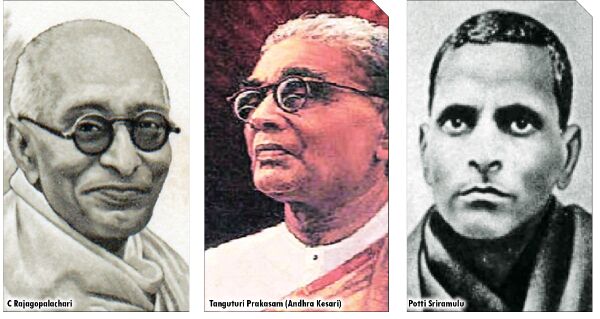Strikes pave the way
Nehru’s backtracking from forming Andhra on linguistic grounds, discussed in the first part, had its own reasons but a series of hunger strikes compelled him to concede to demands

The Andhra ire against Nehru was based not just on account of the rejection of their demand by the LPC and the JVP report, but also on account for his vacillation. As late as November 27, 1949, he had gone on record to state "the demand for the province of Andhra, which if, I (he) may say so, is a perfectly legitimate demand (and) raises relatively few difficulties. It can be included among the provinces in the Constitution, and this decision can be implemented soon after the new Constitution is adopted". However, two days before the inauguration of the Constitution, Nehru backtracked on his promise, mentioning "outstanding difficulties and unresolved questions" that had to be settled. It was easy to understand that the "outstanding difficulty" was Governor General C Rajagopalachari, and the unresolved question was the fate of Madras as both Tamils and Telugus had taken a hardline position in this regard. In local parlance, Madras was called Chennai after a Telugu goddess; and if there was a spiritual city that Tamilians identified with, it was Madurai. But C Rajagopalachari was quite firm on Madras city and he carried a lot of weight with the High Command.
The infighting in the Congress politics of Madras saw a rapid succession of Chief Ministers from 1946 to 1952. Tanguturi Prakasam (Andhra Kesari) held office from April 1946 to March 1947. After being relieved from Madras, largely on the insistence of C Rajagopalachari, Gandhi and Nehru, he turned his attention to Hyderabad and its Telugu-speaking majority. He was instrumental in establishing the Hyderabad State Praja Party and was a votary of Vishalandhra – the convergence of all the Telugu-speaking areas of Hyderabad and Madras. Later, he became the first Chief Minister of Andhra state – the precursor to Andhra Pradesh in 1953.
During the short tenure of his successor, OP Ramaswamy Reddiar, the state was passing through severe food shortages. There was some respite from the Telugus but, in 1951, the Gandhian Swami Sitaram (Gollapudi Sitaram Shastry) undertook a fast unto death which unnerved the then CM, PS Kumaraswamy Raja who sought the intervention of Vinoba Bhave to persuade Swami Sitaram to break his fast after 35 days. Meanwhile, the partition committee set up under the Chairmanship of Chief Minister Raja, with Tanguturi Prakasam representing the Andhras, could not come to a settlement. However, in the 1952 assembly elections, the Congress received a major electoral reverse, winning only 152 seats, as against 164 of the UDF which was led by T Prakasam. In the Telugu-speaking districts, the Congress could secure only 43 of the 140 seats. However, in an arbitrary and unethical move, the then Governor of Madras, Sri Prakasam first nominated C Rajagopalachari to the legislative council and then invited him to head the Congress ministry which did not have a clear majority. C Rajagopalachari was not popular with Kamaraj who held sway over the Congress organisation and was especially resented by the Telugus, for he was identified as the "outstanding difficulty" to the formation of Andhra. He had been the Premier (as CMs were then called) from 1937 to 1939, then the first Governor of West Bengal and the first Governor-General of India. He was also Nehru's choice for being India's first President, but Rajendra Prasad had the support of Sardar Patel and the Congress organisation.
C Rajagopalachari's second term as CM was even more controversial than his first term. He tried to make Hindi compulsory in the state. This time, he annoyed the Tamilians by introducing the 'hereditary education policy "which was perceived to be a ploy to perpetuate the caste system, and the Telugus rose in revolt when he tried to divert the waters of Krishna River for the Krishna Pennar project. The AN Khosla expert committee appointed by the Union government categorically rejected the project, and instead advised Nandikonda, the site of the present-day Nagarjuna saggar, as the alternate site (which fell in Andhras).
This provoked further distrust, and Potti Sriramulu, another self-effacing Gandhian began his fast-unto-death in October 1952 and breathed his last on December 15. This led to another bout of violent agitations and, within days (December 19), the Prime Minister was compelled to announce the formation of Andhra state, but excluding the Madras city, which was keenly contested by the Tamilians.
Views expressed are personal



